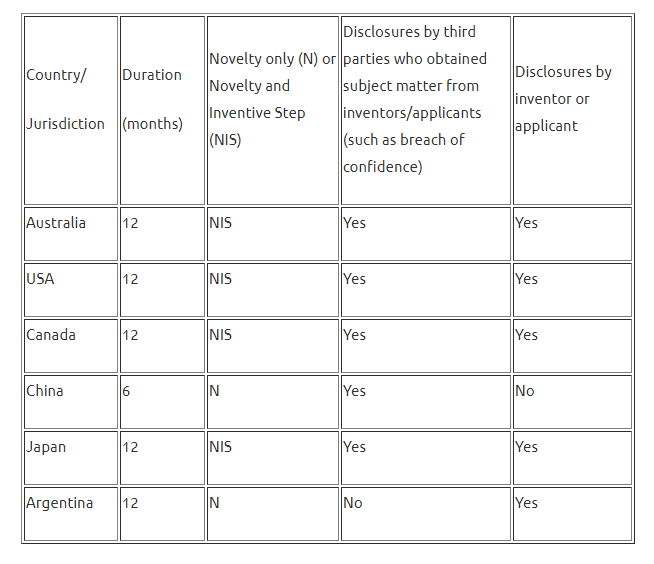

When the cat’s out of the bag: pros and cons of using patent grace periods – by Shu-Yen Lee
- mdp patents
It is a well-known fundamental rule that a patent application should be filed before the invention is disclosed to the public. If it isn’t, the disclosure can be citable as prior art against the validity of the application, in particular, whether the invention meets the requirements of novelty and inventive step.
However, because most SMEs or single inventors usually require assistance in the form of a third party (in the form of potential investors, industrial designers or manufacturers), it may not be easy to keep invention information confidential before the patent application is filed.
Some countries, including Australia, have “grace period” provisions which allow for public disclosure of an invention within a certain timeframe before the patent application is filed and where the disclosure will not be considered citable prior art.
While this all seems advantageous for a potential patent applicant, grace period provisions should be used primarily as a ‘safety net’ for those who have accidentally or inadvertently disclosed their invention. There are significant limitations in relying on grace periods as a routine filing, such as:
Reduction of available valid patent rights overseas. Many countries, such as China and most of the countries in Western Europe, don’t have similar grace period provisions and any pre-filing disclosure will invalidate subsequent applications in these jurisdictions;
Additional filing or post-filing requirements. Applicants relying on grace periods may have to satisfy additional requirements. For example, in the Republic of Korea, Japan or Argentina, an application has to include documentary evidence at the time of filing or shortly thereafter;
Added complexity in filing deadlines and requirements. The provisions governing the appropriate grace period in each jurisdiction vary greatly from jurisdiction to jurisdiction. This makes keeping track of valid filing deadlines and requirements more difficult, which can also increase costs.
Jurisdictions with Grace Periods
The table at the end of this article sets out a non-exhaustive list of different limitations under which grace periods operate in Australia and jurisdictions in which Australians typically wish to file. Notably, on 8 June 2018, Japan increased their grace period from 6 to 12 months, which will apply to disclosures made on or after 9 December 2017.
Europe does not provide for a grace period but offers protection for an applicant against prior disclosure of an invention caused by an evident abuse or display of the invention by the inventor at an official international exhibition.
New Zealand is another country that does not have a grace period. However, disclosures at a government-approved exhibitions (for example, Fieldays) are not novelty-destroying as long as a patent application is filed within 6 months.
While there is no grace period provision for design registrations in Australia, there are extensive grace periods for designs and utility models in other jurisdictions. For example, there is a 12-month grace period in respect of Registered Community Designs (European Union).
In summary, patent applicants should restrict the use of grace periods as a safety net in the event of unintentional disclosure. Due to major limitations in grace period provisions overseas, this is not a recommended strategy to use if you wish to file in jurisdictions other than Australia.




